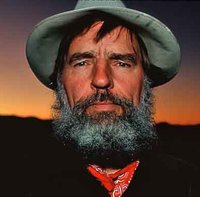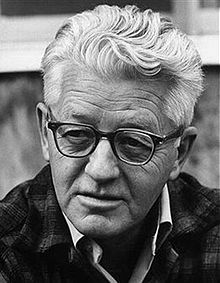The one hundredth meridian, the longitudinal line which divides the green, moist, eastern U.S. from the drier plains and the western desert, might also be the demarcation of attitudes, styles and culture which distinguish these two major American regions. Topographic and climate variations, an ease or a lack of availability of natural resources, and the language and customs of early colonists made a lasting impact resulting in regional differences of cuisine, place names, building styles and more.
It makes one wonder, what impact does the natural landscape have on writers? Henry Thoreau lived at Walden Pond, Willa Cather knew the Nebraska Plains, and Mark Twain worked the Mississippi. These places obviously had an impact on what they wrote about, but how did their environments also shape their worldviews, imagery and style? What makes a Western writer a Western writer? They have mountains, deserts, wide open spaces and a far off coast as their backyard. But it cannot merely be geography (both topical and topographical) alone which creates the Western writer. Edward Abbey, who was born in Pennsylvania, came west for the first time in 1945, when he was 17, and fell in love with the desert. He later said “There is science, logic, reason; there is thought verified by experience. Then there is California.”

Abbey could be described as an early eco-anarchist for his outspoken views in favor of civil disobedience for environmental causes; his personal relationships were as large as life as the monkey-wrenching characters in his novels. In many ways he had much in common with his Eastern predecessor Henry David Thoreau, another famous civilly disobedient naturalist. Abbey’s Desert Solitaire (Ballantine reprint 1990) consists of both beautiful narratives on the Canyonlands of Utah, and rants against his fellow man. He was willing to “speak the truth” as he put it, to provoke and criticize the status quo in order to bring attention to his views on a wide range of issues, including the developments of the national parks. While known as an essayist, he was equally proud of his fiction, and many of his novels are still in print today, including The Monkey Wrench Gang and Brave Cowboy (both Perennial), the film version of which, starring Kirk Douglas, was called Lonely Are the Brave. An anarchist and underground cult hero to the end, when Abbey died in 1989 he was illegally buried by family and friends in the Arizona desert.

Wallace Stegner, a long-time university professor, a Pulitzer prize winning novelist and a historian, was also known for his writings on nature. Stegner chaired a writing fellowship program at Stanford University for many years, and mentored several well-known Western writers including Edward Abbey, Ken Kesey and N. Scott Momaday. He died in Santa Fe in 1993, after a car accident.
His biography of Grand Canyon soldier-explorer John Wesley Powell (Beyond the Hundredth Meridian, Penguin) and his advocacy for the federal protection of western lands (Wilderness Letter, which helped to establish the federal Wilderness Preservation Act) mark him as a Western historian and naturalist, but much of his fiction works is set in Vermont. His style was to work within the system, as a teacher and as a member of Stewart Udall’s Interior Department staff, and with the Sierra Club, the Wilderness Society, and other local California environmental groups. His last book, Where the Bluebird Sings to the Lemonade Springs: Living and Writing in the West, as well as most of his other 30 books, are still in print. Stegner called the West, that place beyond the hundredth meridian, “rootless and culturally half-baked”, but he loved it all the same. In order to appreciate its beauty he said you just had to get over the color green.
Wallace Stegner and Edward Abbey wrote fiction and non-fiction works set in the desert West they both loved. And while Stegner and Abbey both wrote about the beauty and protection of the natural resources of our region, their personalities, writing styles, and approaches to conservation and environmental activism are very different. Readers of nature writing will appreciate having access to both these writers in your local library.
